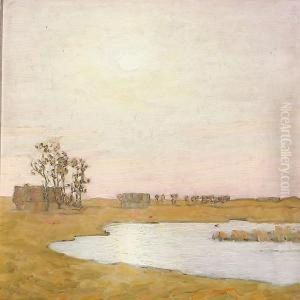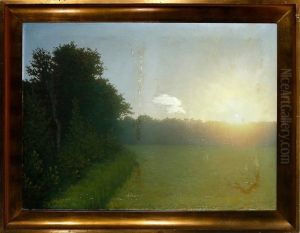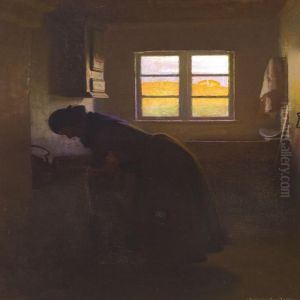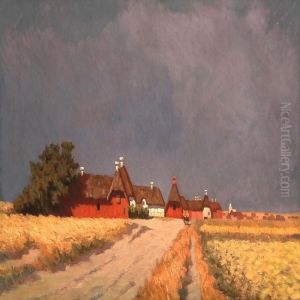Valdemar Schonheyder-Moller Paintings
Valdemar Schonheyder-Møller was a Danish painter known for his landscapes and genre scenes. Born on December 10, 1864, in Copenhagen, Denmark, he was part of the late 19th-century European art movement, where there was a strong emphasis on naturalism and capturing the everyday life.
Schonheyder-Møller studied at the Royal Danish Academy of Fine Arts in Copenhagen, where he was influenced by his contemporaries in the Danish Golden Age of painting, a period characterized by a high quality of craft and an appreciation for the domestic landscape. Artists like Vilhelm Hammershøi might have been among his peers, who were also interested in a nuanced, subdued style of painting.
In his work, Schonheyder-Møller often focused on rural scenes, depicting the Danish countryside with a particular sensitivity to light and atmosphere. He worked within a palette that was typically muted, which was common among Danish painters of the time, allowing for a subtle interplay of color and form. His compositions often portrayed the serenity of rural life, with an attention to the changing seasons and the simple beauty of the countryside.
Although not as widely known as some of his contemporaries, Schonheyder-Møller contributed to the Danish art scene with his quiet, contemplative paintings that reflected a love for his native landscape. His works are characterized by their tranquil ambiance and their capacity to evoke the emotion of a place without dramatic or romanticized elements.
Valdemar Schonheyder-Møller's career was relatively short as he died at a young age. He passed away on March 19, 1912, in Frederiksberg, Denmark. His legacy lives on in Danish art history as an example of the naturalist movement and as a documenter of the Danish landscape at the turn of the century. His paintings can still be seen in art museums in Denmark and occasionally appear in international collections and exhibitions.



